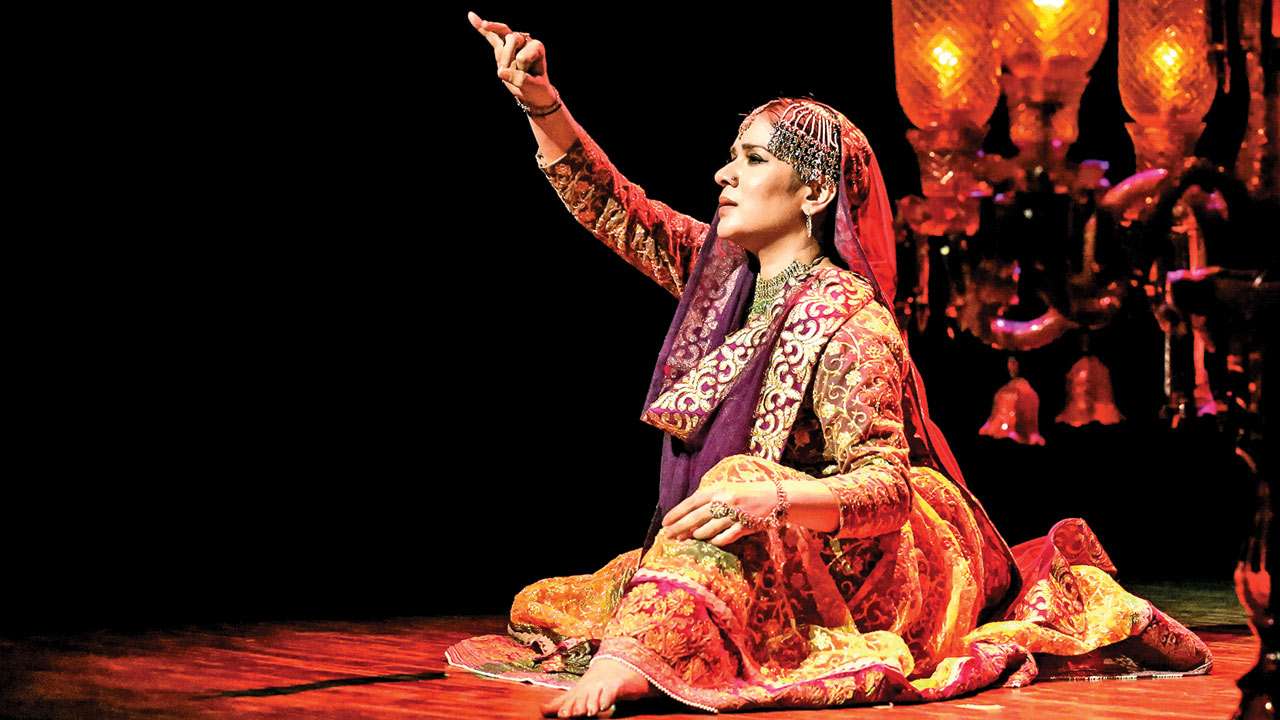
The fallen woman, prostitute, or a mere entertainer. The word ‘tawaif’ or courtesan has several such negative connotations. Yet Delhi resident and classical dancer Manjari Chaturvedi says, “You can call me a courtesan and I won’t mind.” The unwritten side of history that exists but is lesser known is the part where Chaturvedi feels she’s 20 years too late to narrate. Growing up in the city of Lucknow, learning Kathak in the Northern state and then moving South to learn abhinaya in Chennai, she has been performing from the age of 16. From there she quickly became interested in the art of the courtesans, who were so much more than just dancers of the royal court. “We haven’t given women performers their due respect as we did the male performers. And if both men and women were performers why did we glorify men into stars and women into the nautch girls and tawaifs just by virtue of their genders and not their arts,” the Kathak exponent laments.
Often when the lens is turned to women, her artwork comes secondary to her beauty and features. Enchanted by these ‘dancing girls’ the nawabs and zamindars would watch in awe of their performance but Chaturvedi presents an alternate theory, “To be able to perform on stage you need to spend at least 10 years and give 4-5 hours of your day in practice. So why is it that we take women so superficially?”
Society took one look at the first independent, working woman and equated her with a prostitute for the elite. This is reflected in Bollywood that has also dealt a skewed perception of tawaifs. They are often portrayed as helpless, ‘the other woman’ or even interchangeable for an abuse in movie dialogues. Although centuries ago, tawaifs were the highest form of entertainment and forbidden to the common man. It was for the royalty that could understand the finer nuances of the performance and understand the Persian language. “These women laid the foundation of Hindi cinema in the pre-independence period. And yet cheap versions of mujra are now made to show women as mere pretty faces,” says Chaturvedi.
In her research, she found the tawaifs were learned women, who practised ghazals and studied Persian at a time when educating women was unheard of. Despite their other interests, the women are left out of the history books.“If you study performing arts you are made to read the life history of ‘ustaads’. The Grandfather of Biju Maharaj was a dancer in the court of Wajid Ali Shah but so was Malka Jaan, also known as Gauhar Jaan. Yet her name doesn’t feature anywhere.”
Yet, Chaturvedi is hoping to change this narrative with her creation – The Courtesan Project, the flagship dance revival concept by Sufi Kathak Foundation that is now coming to Mumbai. The movement to restore tawaif’s names to their former glory began in 2014 and the reason for this she explains, “In 20 years of dancing, I’ve not seen any Kathak dancer acknowledge a courtesan or a tawaif. It’s sad that we cannot acknowledge the women who have kept Kathak alive all these years.”
The Courtesan Project will have music of the 18-20th-century music. It has well choreographed structured dances, which depicts the art of that time. “My aim is to create an alternative narrative for future generations. So that they don’t have only a one-sided version of these women that is only portrayed in Bollywood,” she says.
Gauhar Jaan, also known as Malka Jaan, used to travel in a horse and buggy at a time when only the rich and elite would use that method of travel. One day as she was trotting along the streets of then Calcutta she happened to catch the fancy of an Englishman. Because she looked like royalty he took off his hat and saluted her, which she gracefully accepted. But when the Englishman realised that she was a tawaif he banned her buggy from the streets and said she would have to pay a fine if she was seen in it again. However, Gauhar didn’t let this faze her and every time she had to get out of the house she would promptly ride to his office in her horse and buggy, pay the fine and be on her way.